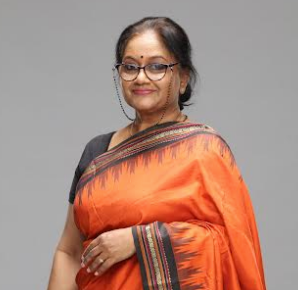Education Must for Early Detection of Breast Cancer
November 15, 2023 | Wednesday | Views | By Dr Padma Venkat, Dean, School of Health Sciences & Technology, UPES, Dehradun
Medical curriculum of the Indian National Medical Council delves into various cancer and tumour types
Breast cancer (BC) is the most diagnosed type of cancer claiming the lives of more than 0.5 million women every year globally. Breast Cancer has become so common in India that we are bound to know a friend or a family member suffering from it. Thanks to the scientific and technological advances in oncology, early detection and treatment have helped increase survival to almost 95%, reduce morbidity and lower cost of care.
However, even literate people are unaware of this or shy about accessing early breast cancer detection methods. Constant efforts are needed to increase breast cancer awareness among doctors as well as women and the public.
Breast Cancer Disparities in Low- and Middle-Income Countries
The World Health Organization (WHO) recommends that countries commit to a holistic, 3-pillar public health approach, including health promotion, timely diagnosis and comprehensive treatment, and supportive care. Mortality due to breast cancer has dropped by 40% in high-income countries because of access to early detection and treatment facilities.
Yet, this is not the case in low- and middle-income countries like India, pushing several families to poverty and financial hardships, social instability, and suffering. For countries with dense/remote populations with limited resources, cancer awareness and early detection of breast cancer are sustainable ways to reduce incidence and mortality.
The National Cancer Control Programme was started by the Government of India in the 1970s. However, breast cancer screening is yet to become a part of national health monitoring systems in every district.
Early Detection and Diagnosis
Early detection methods (EDM) mainly include breast awareness, clinical breast examination and mammography. Imaging techniques including MRI, PET, ultrasound, molecular markers and traditional tissue pathologies are further employed for confirmation and staging. Research on newer digital imaging techniques and molecular diagnostics is underway to provide affordable and accessible diagnostic methods. Studies on cultured, ex vivo and in vivo breast cancer cells are contributing to furthering fundamental understanding of the erratic behaviour of cancer cells. Emerging Artificial Intelligence-based solutions for breast cancer are awaited.
Early detection methods (EDM) can be classified as those that can be handled at the individual or community level and others that require access to a facility or an expert. Trained ANMs (Auxiliary Nurse Midwife) and ASHA (Accredited Social Health Activist) workers, and physicians (Medical, AYUSH) play a pivotal role in early detection and referrals at the community level. Studies have shown that creating awareness among the public about breast health and risk factors, and training women in self-examination, had a significant increase in the early-stage BCs reported. This in turn helps in quick and effective management.
Medical Education and Interdisciplinary Collaboration
The medical curriculum of the Indian National Medical Council delves into various cancer and tumour types including BC. Continuous medical education and skill-based fellowships can provide doctors and students of medical and allied professions the necessary exposure and skills to adapt to the changing S&T scenarios. Innovative early detection methods can be arrived at through the trans-disciplinary collaboration of medical doctors, health scientists, technologists, and sociologists. Government policies and programmes that prevent environmental damage and enable lifestyle improvement are long-lasting solutions to reducing breast cancer cases.
Dr Padma Venkat, Dean, School of Health Sciences & Technology, UPES, Dehradun










